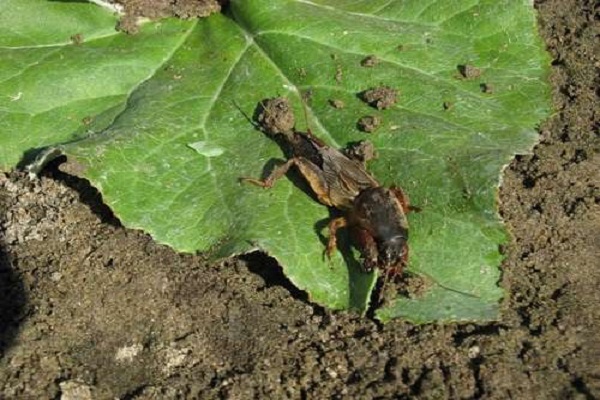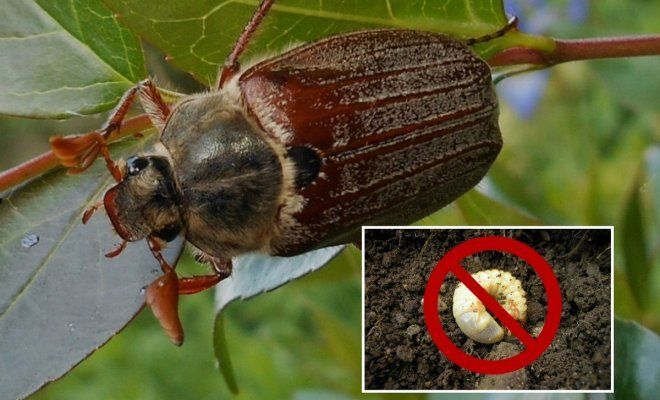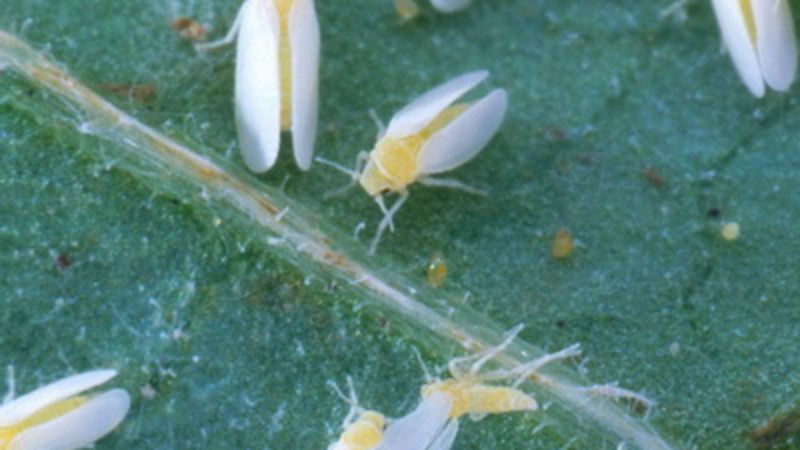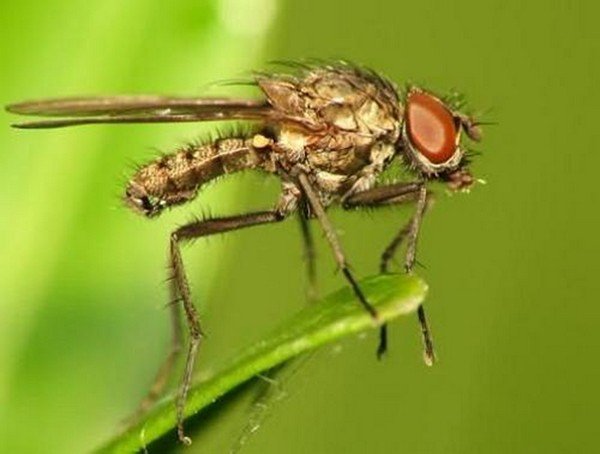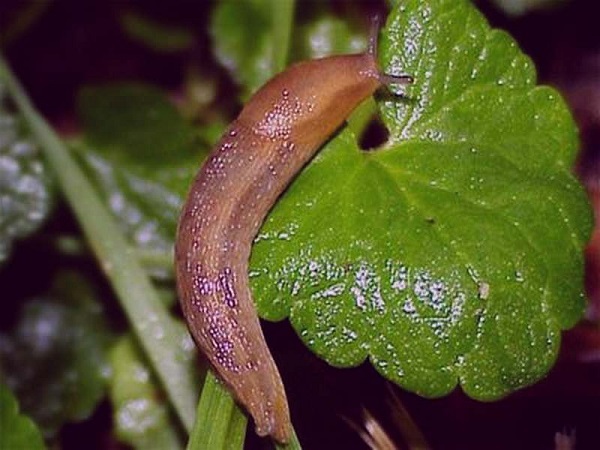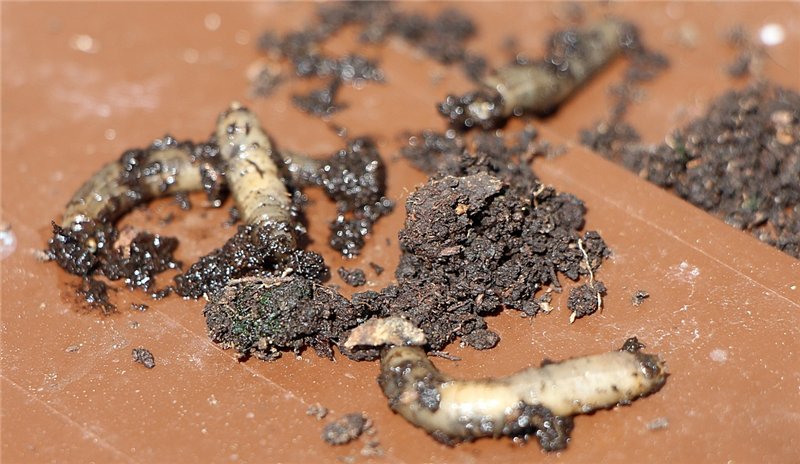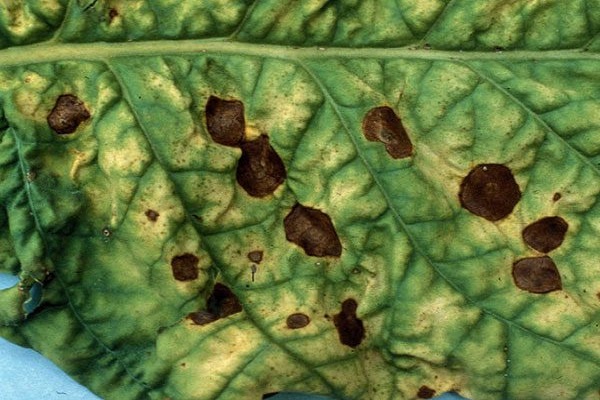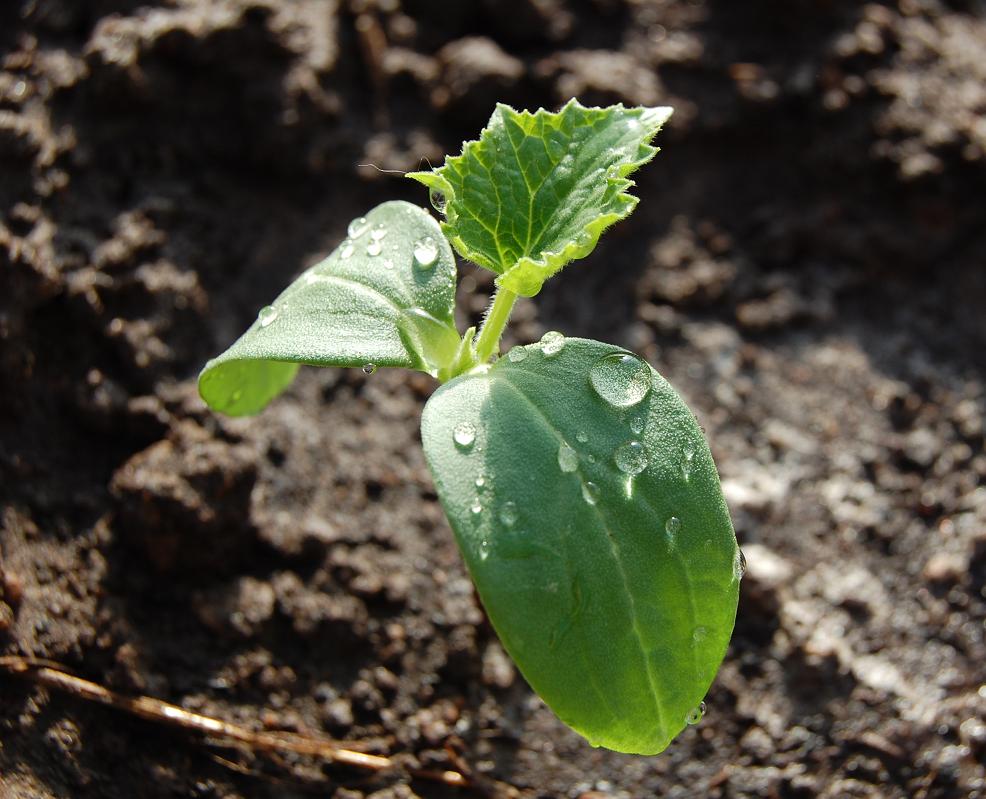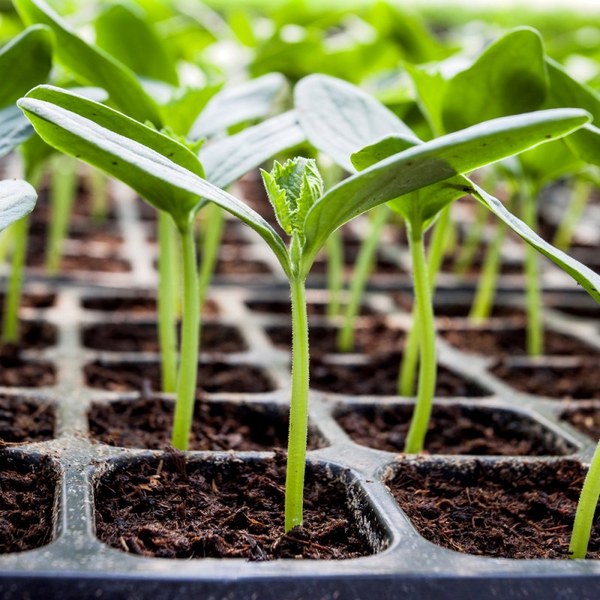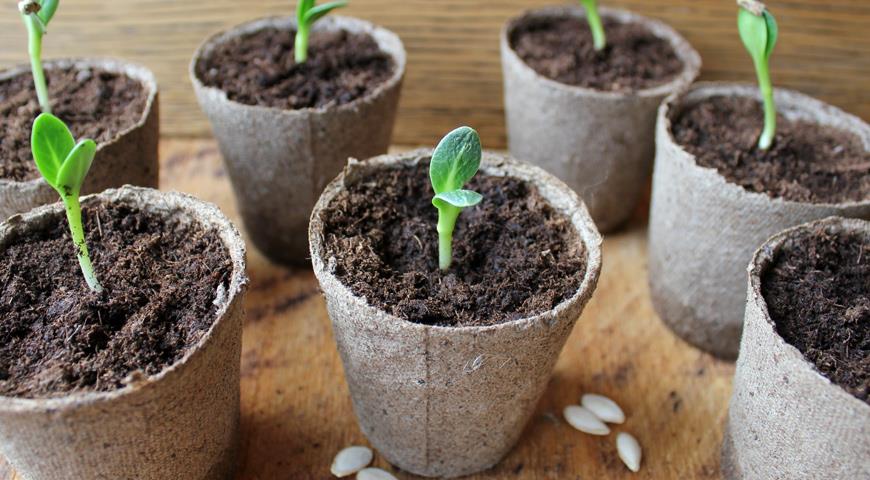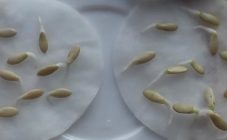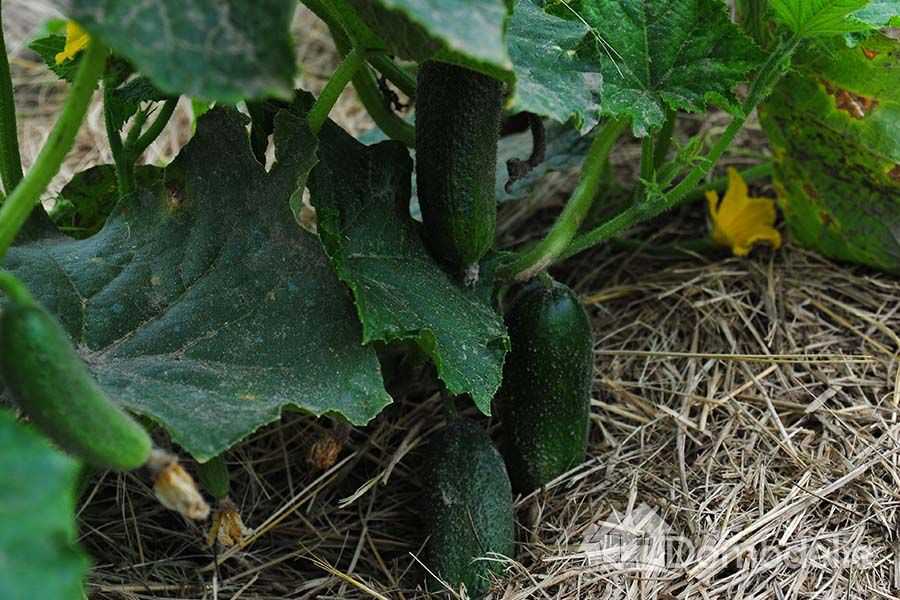Content:
Pests and infectious diseases can spoil crops not only in open garden beds, but also inside heated greenhouse shelters. So which pest eats up cucumbers? This vegetable is loved not only by people, it is willingly eaten by harmful insects and mice.
Pests inside the greenhouse
To select pest control products, you need to find out who is eating the cucumber seedlings in the greenhouse.
Experienced vegetable growers know that harmful insects cause the greatest damage to the cucumber crop:
- whitefly;
- wireworm;
- bear;
- slugs;
- caterpillars of the winter scoop.
Medvedka
Cucumbers die from this pest both in open garden beds and in greenhouses. Medvedka causes great damage to the crop in the southern regions and the middle zone of the Russian Federation. It can be assumed that she settled in a greenhouse if the grown plants begin to dry out unexpectedly.
Adults hide deep in the soil. Together with the first spring heat, the pest wakes up and begins to lay eggs. Larvae and sexually mature bears eat the underground part of plants.
Especially many pests appear in the garden immediately after watering; they are attracted by well-loosened and moist soil. In the daytime, the pest hides deep in burrows, and at night it eats young roots from seedlings.
Chafer
This harmful insect inflicts a double blow on cucumber beds, since not only adults but also larvae destroy plants.
May beetle (Khrushch) has large enough dimensions for an insect, the length of its body reaches 3.5 cm. The wings of the pest are painted in dark brown, reddish-brown or black.
In May, adults begin to mate, after which the female lays eggs deep in the soil and dies. Beetle larvae appear in July and begin to eat garden crops. It takes 3-4 long years until it turns into a beetle. During this time, the insect manages to inflict significant damage.
Whitefly
The white-winged butterfly inflicts great damage on garden crops not only in greenhouse shelters, but also in open beds. Whitefly is a very small insect, its size ranges from 0.9 to 1.1 mm. The body of the insect is milky yellow in color, and the wings are painted whitish.
The insect is mostly common in the southern regions of Russia, where the air temperature rarely drops below -12 degrees.
Sprout fly
This gray insect reaches a length of 0.5 cm. The pest wakes up in the spring and begins to actively lay clutches in wet areas of the soil, or on manure.
Larvae form in 10 days. During the warm season, the sprout fly can reproduce 3 generations of pests. If someone eats cucumber seeds in the ground, then a sprout fly is most likely in the greenhouse.
Slugs
Slugs do not have tentacles, legs, or any other limbs. They crawl from stem to leaf, leaving a trail of sticky mucus behind. Outwardly, these pests are similar to snails, with the difference that slugs do not have a shell house on their backs.
The slug is nocturnal; during the daytime it hides in the ground.The pest eats not only the leaves, he is not averse to feasting on the ovary and fruits of plants.
How to get rid of pests
To protect young shoots from pests, you need to determine which insect is damaging the cucumber beds. Different types of pests can eat seedlings:
- stem;
- leaves;
- fruit;
- root.
After it is discovered that someone is eating cucumbers in the greenhouse and the type of enemy of the cucumber seedlings has been identified, you can proceed to the selection of suitable methods and means to destroy it.
Someone is eating cucumber seedlings
Young cucumber shoots in greenhouses are especially affected by the small white-winged butterfly. This pest is equally dangerous for cultivated plants in the adult state and in the larval stage.
The larvae suck the juices from the plant, and mature individuals are carriers of infections. It is very difficult to deal with this pest.
Understanding exactly who eats cucumber seedlings is very important for choosing an insect control agent. It is possible to determine that the damage to greenhouse plants is caused by the whitefly by the following criteria:
- the leaves are covered with whitish dots;
- sticky discharge appeared on the stems;
- some leaves are twisted;
- if the leaf is turned over, then small larvae, similar to scales, will become visible;
- if you shake a cucumber liana, then tiny white butterflies will fly into the air.
If the pest is found during active plant growth, you can try hanging fly tape in the greenhouse. Folk ways to combat harmful insects suggest using a tincture:
- dandelion;
- garlic;
- wild garlic;
- yarrow.
Plants must be processed once every 7-10 days.If folk methods of struggle were powerless against the pest, you will have to use chemical agents, such as:
- Biotlin;
- fufanon;
- actellic.
Aphids can also suck juice from plant leaves. To get rid of it, you need to wash the young leaves on the seedlings with water and soap.
Someone is eating cucumber seeds in the ground
Many growers complain about the very poor germination rate of the seed. The seeds from the holes just disappear, so who eats the cucumber seeds in the ground?
The larva of the sprout fly eats the seeds. In order to rid the beds of this pest, it is enough to dig deep into the garden in spring and autumn and not leave heaps of manure on the soil surface.
In addition, plant seeds can eat:
- mice;
- slugs;
- ants.
For all types of underground pests, you can use the drug "Muravyin".
Someone is eating cucumber leaves
Pests eat not only young shoots, but also the foliage of cucumber bushes. So who eats cucumber leaves? The high level of humidity in greenhouses and hotbeds leads to the fact that slugs begin to actively reproduce inside these shelters.
Slugs live underground and go out to eat plant leaves at night, for this reason, vegetable growers do not always manage to timely detect the enemy of cucumber seedlings. When fruits begin to form on the plants, slugs can also eat the fruit ovaries. These pests are not averse to feasting on grown fruits.
The difficulty lies in the fact that the slug can penetrate into the container, digging from the inside. To prevent the slug from getting to the cucumbers, sprinkle the beds from:
- coarse river sand;
- sawdust;
- broken nutshell;
- fir-tree needles.
In specialized stores, granular chemical preparations are sold, the action of which is aimed at destroying the pest:
- Sludge Eater;
- Storm.
Apply funds according to the instructions attached to them.
Someone is eating cucumbers in the greenhouse
Ripening fruits can gnaw:
- slugs;
- mice;
- worms;
- caterpillars.
In order to protect the crop, you can regularly spray the plants with infusions of herbs, garlic. After spraying, you can dust the cucumber whips with the leaves and the pouring crop with ash. The plants will look ugly, but cucumber bushes will become tasteless for the pest.
Someone chews on the stem of a cucumber
A familiar situation for many gardeners, when yesterday healthy green shoots begin to dry out on the vine, or instead of them gnawed stumps stick out of the ground. Cucumber stalks can gnaw:
- bear;
- beetle larvae;
- winter moth larvae.
You can fight this group of pests with the help of chemicals or folk methods. Gardeners suggest destroying the larvae with boiling water. About an hour before planting seedlings, you need to fill the hole with boiling water. Opinions about how much hot water should be poured into the hole differ, some gardeners recommend at least 5 liters, others believe that one liter is enough.
Seedlings are recommended to be watered with onion peel infusion. This method of destroying pests also allows you to add nutrients to the soil.
You can pour a small amount of vegetable oil into the holes of the bear and add bait from the preparations:
- Thunder;
- Phenaxine;
- Grizzly.
Wireworms can feed on cucumber stems. To do this, the pest gnaws the walls of the cucumber lash and settles inside it.
Someone is eating a cucumber root
The underground part of cultivated plants is most often devoured:
- wireworm larvae;
- beetle larva;
- bear.
You can reduce the amount of wireworm in the greenhouse using the drug Bazudin.
Medvedka is poisoned with Vofaktoks, Rembek.
In open beds, ammonia solution can be used to control pests. They are watered with furrows in the soil at a distance of 10-15 cm from the plants themselves. This method is not suitable for greenhouses and greenhouses.
Experienced gardeners offer young plants to be planted in the ground along with a barrier from a plastic bottle. For this purpose, they take a plastic two-liter container without a bottom and dig it in to a depth of 30 cm.
Is it necessary to control pests
Insect control with chemicals is carried out only if any type of pest is found inside the greenhouse. Until this moment, it is necessary to carry out comprehensive preventive measures.
In the best case, bushes gnawed by pests will give a very low yield. The fruits of weakened plants will have an unattractive appearance. Often on eaten bushes, cucumbers are deformed, they are not suitable for conservation and sale.
What to do, what to process
A large amount of planting material is sold already processed. If the purchased seeds have an unusual color, then they do not need to be soaked in protective solutions. The rest of the seeds must be treated with chemicals before sowing.
After the seedlings appear, they need to be sprayed from a spray bottle with a solution containing a chemical with a wide range of effects. If you find that someone is eating the stems or leaves of cucumbers, you need to know how to process the plants in the greenhouse. Targeted chemicals should be used against a certain type of pest.
Preventive measures
Pest control begins during the greenhouse construction phase. Then, measures aimed at the destruction of harmful insects continue at all stages of plant life. To prevent uninvited guests from destroying the cucumber crop, you need:
- after harvesting, remove plant residues from the greenhouse;
- weed the beds in a timely manner;
- before planting seedlings, treat the holes with boiling water and special means;
- remove the infected layer of earth from the shelter;
- spray the plants with infusions of garlic and onion peels.
Properly carried out prevention aimed at protecting plants will help preserve the crop.
